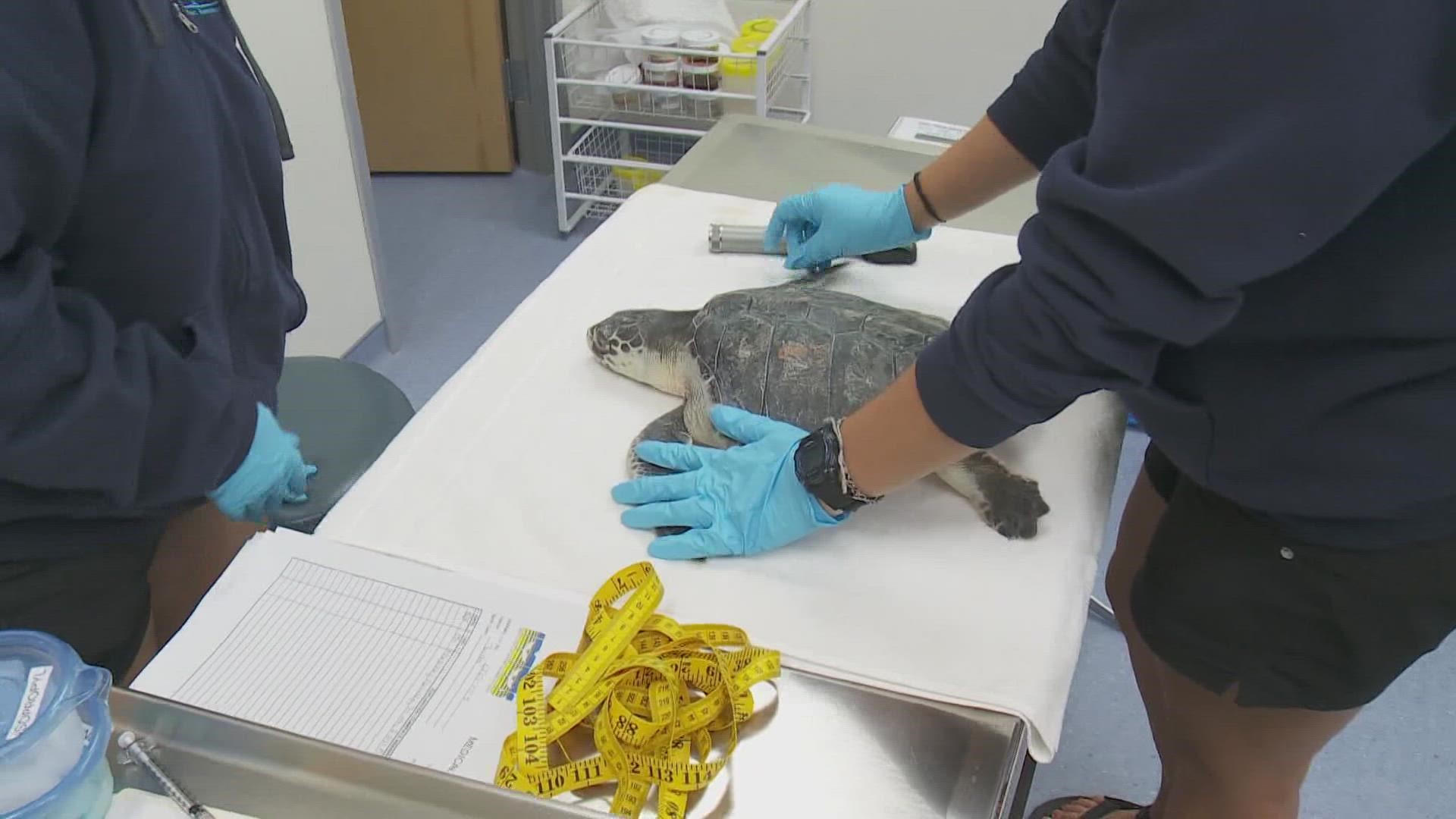MISSISSIPPI, USA — For the first time in four years, an endangered sea turtle made her nest on the beaches on the Mississippi Gulf Coast.
Scientists said that it took this long because of problems stemming from decisions made in Louisiana.
And those problems can have long-lasting effects on our way of life, and the seafood industry at home.
One turtle left a sign of hope, but it comes with a warning about nature's delicate balance.
The Kemp's Ridley sea turtle is the most endangered in the world.
So, the work to save them at the Institute for Marine Mammal Studies in Gulfport is important.
That's why a small cordoned-off piece of beach in Pass Christian is a sign of optimism and excitement.
“The nesting is a significant event because once the animals start reproducing, that means things are getting better,” Dr. Moby Solangi, Director of IMMS said.
A sea turtle laid around 100 to 150 eggs.
The rare event was discovered by the distinct tracks in the sand.
“And thankfully the beach maintenance crews in Harrison County recognized exactly what that was and gave us a call,” Theresa Madrical, IMMS Stranding Coordinator said.
At times there are volunteers that stay around the barricades to make sure that the nest is protected.
Then, when it gets closer to when the hatchlings are supposed to come out, IMMS is going to have some of their people come out and watch the site because they want to make sure that everything goes right when those hatchlings go back into the Mississippi Sound.
“It's a very low percentage that will make it to being an adult. They estimate that about one in 1,000 hatchlings will make it to be an adult,” Madrical said.
But the nest is only a small sign of recovery because an entire habitat and ecosystem can take many years to come back.
“You had a one-two punch. First came the (BP) oil spill. Things were starting to recover. Then came the Bonnet Carre' Spillway (opening), and it really did it in. We lost all the oysters, the crabs, the shrimp, the fish, and we had lots of dolphins, and turtles that died. So, that tells you that it was an aquatic hurricane,” Dr. Solangi said.
It's not just the river's freshwater that can destroy the ecosystem, but the pollution from 31 states and two provinces in Canada that flow with it.
It’s a reminder, he said, that when you mess with nature, consequences flow downstream.
It takes about 55 days before the turtle hatchlings will break out of their shells and dig out of the two-foot-tall hole to walk back into the water.
They will come back to the same beach to lay their eggs in 15 years or more.
They live to be around 60 years old.
To go visit IMMS or to donate, click this link.

